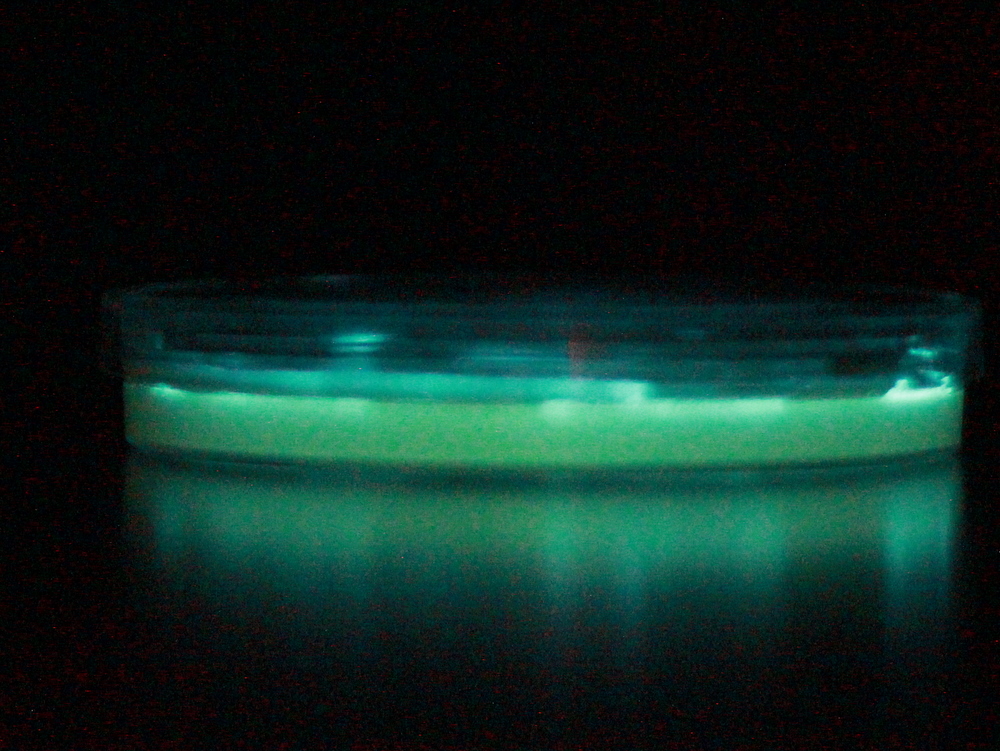Team:Cambridge/Bioluminescence/Bacterial Luciferases
From 2010.igem.org
(Difference between revisions)
| Line 6: | Line 6: | ||
* Substrate production within E. coli, avoiding the need for addition of external substrates, such as luciferin. | * Substrate production within E. coli, avoiding the need for addition of external substrates, such as luciferin. | ||
| - | Lux operons are found in the genomes of a range of [https://2010.igem.org/Team:Cambridge/Bioluminescence/Background natural bioluminescent bacteria]. | + | Lux operons are found in the genomes of a range of [https://2010.igem.org/Team:Cambridge/Bioluminescence/Background natural bioluminescent bacteria]. Five enzymes are encoded by these light-producing [https://2010.igem.org/Team:Cambridge/Bioluminescence/Background Lux systems]. |
| + | *<i>luxA</i> and <i>luxB</i> form the luciferase of the system, which causes the emission of light when acting on the substrate <b>tetradecanal</b>. | ||
| + | *<i>luxC</i>, <i>luxD</i> and <i>luxE</i> are involved in the biosynthesis of tetradecanal from readily available substrates. | ||
| + | In nature, the lux genes appear to be repressed by the [https://2010.igem.org/Team:Cambridge/Bioluminescence/Background nucleoid protein, H-NS], and occur under [https://2010.igem.org/Team:Cambridge/Bioluminescence/Background quorum sensing control]. | ||
==Our work== | ==Our work== | ||
Revision as of 18:16, 23 October 2010

Project Vibrio: Introduction
Project Vibrio was designed to complement Project Firefly, by using bacterial lux operons to do what had been impossible with firefly luciferases:
- Emission of blue light to complete our spectrum of emission wavelengths.
- Substrate production within E. coli, avoiding the need for addition of external substrates, such as luciferin.
Lux operons are found in the genomes of a range of natural bioluminescent bacteria. Five enzymes are encoded by these light-producing Lux systems.
- luxA and luxB form the luciferase of the system, which causes the emission of light when acting on the substrate tetradecanal.
- luxC, luxD and luxE are involved in the biosynthesis of tetradecanal from readily available substrates.
In nature, the lux genes appear to be repressed by the nucleoid protein, H-NS, and occur under quorum sensing control.
Our work
We cloned the lux operon from the bacterium Vibrio fischeri, which
- Vibrio fischeri, which forms a symbiosis with squid allowing the squid to hunt in moonlit nights without casting a shadow. Due to this their lux proteins are non-functional above 30 degrees
 "
"
